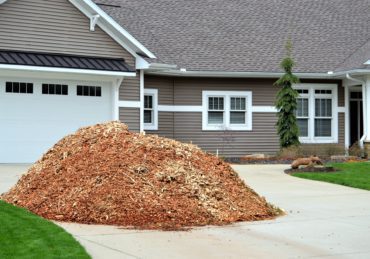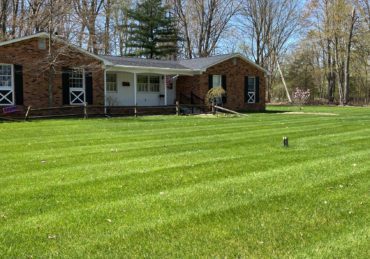To plant winter rye grass effectively, timing is essential. For northern regions, sow seeds from late August to early October, while southern areas should aim for late September to early November. Verify soil temperatures are above 50°F (10°C) for ideal germination. Prepare the soil by clearing debris, tilling to a depth of 2 to 4 inches, and incorporating organic matter. Use a seeding rate of 2 pounds per 1,000 square feet, employing methods like no-till drilling or broadcasting. Proper care post-planting guarantees successful establishment. Investigate further techniques to maximize the benefits of winter rye grass in your garden or farmland.
Why Plant Winter Rye Grass?
Planting winter rye grass offers numerous agronomic benefits, including improved soil health, enhanced erosion control, and effective weed suppression.
As a robust cover crop, winter rye’s deep root system mitigates soil erosion, stabilizing the topsoil during winter months. Its cold-hardiness enables successful germination in low temperatures, making it particularly advantageous for late fall planting.
Growing winter rye not only prevents nutrient runoff but also increases organic matter when tilled under in spring, thereby enriching soil fertility.
Moreover, winter rye generates more dry matter compared to other cereal grains, providing a valuable biomass resource.
The Best Time to Plant Winter Rye Grass
Determining the best time to plant winter rye grass varies considerably between northern and southern climates.
In northern regions, planting should occur in late summer to early fall, ideally between August and October, to guarantee adequate growth before winter.
Conversely, southern climates allow for later planting due to milder conditions, affording greater flexibility while still maximizing the benefits of this hardy cover crop.
Planting Winter Rye in Northern Climates
In northern climates, the ideal timeframe for sowing winter rye grass is between late August and early October, guaranteeing proper establishment before the onset of frost.
The best time for planting winter rye aligns with optimal soil temperatures, which should be above 50°F (10°C) to promote rapid germination.
A seeding rate of 2 pounds per 1,000 square feet is recommended for effective coverage and weed suppression.
Proper preparation of garden soil, including tilling and debris removal, is vital to enhance seed-to-soil contact, thereby improving germination rates.
Moreover, monitoring soil moisture levels during the growing season will help secure successful establishment and vigorous growth of winter rye before freezing temperatures arrive.
Planting Winter Rye in Southern Climates
For those in southern climates, the ideal timeframe for sowing winter rye grass ranges from late September to early November, ensuring adequate establishment prior to winter frost. This late fall planting allows winter rye to germinate even in cooler temperatures, making it an excellent choice for warmer regions.
A seeding rate of 2 pounds per 1,000 square feet is recommended to provide sufficient coverage and suppress weeds effectively. Regular monitoring of soil moisture is vital during the establishment phase, as it influences the success of the crop.
In addition, incorporating winter rye as a cover crop enhances soil health and nutrient availability, particularly when tilled in the spring at a height of 6 to 12 inches, promoting a robust agricultural ecosystem.
Soil Preparation for Planting Winter Rye Grass
Effective soil preparation is essential for successful planting of winter rye grass, ensuring ideal seed-to-soil contact and reducing competition from weeds.
Begin by clearing the planting area of debris and weeds, which can hinder growth. The soil should be well-draining with a pH range of 5.0 to 7.0, although winter rye tolerates a broader range.
Tilling the soil to a depth of 2 to 4 inches enhances aeration and creates a suitable seedbed. Incorporating organic matter, such as compost, improves nutrient availability and soil structure.
Prior to planting, conduct soil testing to assess nutrient levels and determine if additional fertilization is necessary, as rye typically requires minimal amendments for peak growth.
How to Plant Winter Rye Grass
Proper planting techniques for winter rye grass are essential to achieving ideal growth and establishment before winter dormancy.
To effectively plant winter rye, choose a window between late summer and early fall, preferably from August to October.
Utilize a seeding rate of 2 pounds per 1,000 square feet, ensuring excellent coverage and weed suppression.
Employ methods such as no-till drilling or broadcasting, followed by rolling the soil to cover the seeds with about 1 inch of soil.
Regularly monitor soil moisture, watering lightly if natural precipitation is insufficient.
Planting before the first frost allows the best grass to germinate, enabling it to grow winter rye in cooler temperatures, and thereby serving as an effective cover crop for the upcoming season.
Caring for Winter Rye Grass After Planting
Caring for winter rye grass after planting involves diligent monitoring of soil moisture and timely mowing to promote healthy growth and nutrient incorporation.
As winter approaches, it is essential to monitor soil moisture levels closely, reducing watering as the grass enters dormancy to prevent over-saturation.
Mowing should be executed when the grass reaches a height of 6 to 12 inches, ideally before tilling under the crop. This practice enhances the incorporation of nutrients back into the soil, ultimately benefiting soil health.
After mowing, allow the cut stems and leaves to dry for at least three weeks prior to tilling, facilitating easier incorporation and ensuring effective nutrient release, hence supporting overall soil enhancement.
How to Use Winter Rye Grass as a Cover Crop
Utilizing winter rye grass as a cover crop offers numerous benefits, including enhanced soil structure, erosion prevention, and nutrient retention throughout the winter months.
When planted in late fall, winter rye grass establishes a robust root system that effectively aids in erosion control, preventing soil degradation during harsh winter conditions.
The recommended seeding rate of 30 to 50 lbs per acre guarantees ideal coverage and weed suppression.
By incorporating winter rye grass when tilled under in spring, farmers can increase organic matter in the soil, enriching it for subsequent crops.
This dual purpose of winter rye, both as a cover crop and a nutrient source, highlights its significance in sustainable agricultural practices.
Mowing and Maintaining Winter Rye Grass in Lawns
Maintaining winter rye grass in lawns requires regular mowing to guarantee healthy growth and prevent the grass from becoming overly tall before entering dormancy.
It is advisable to mow when the rye grass reaches a height of 2-3 inches to promote ideal growing conditions. In warmer climates, multiple mowings may be necessary to keep the grass under 12 inches.
Mowing should ideally occur at least three weeks before planting any subsequent crops in spring, allowing the cut rye to decompose and enhance the soil’s nutrient benefits.
Following mowing, allow the rye grass leaves to dry before tilling in the spring, facilitating easier soil integration.
Utilizing a garden tiller may be necessary for tougher, denser rye stems.
Overseeding with Winter Rye Grass
Overseeding with winter rye grass offers an effective strategy to enhance existing lawns, particularly following the maintenance practices established during the mowing phase.
This method is typically executed in late summer to early fall, around early September, ensuring ideal establishment before the first frost. An excellent choice for overseeding, winter rye grass provides effective weed suppression and revitalizes tired turf.
For best coverage, a seeding rate of 2 pounds of grass seed per 1,000 square feet is recommended. Before overseeding, prepare the lawn by mowing to 2-3 inches and removing debris to improve seed-to-soil contact.
Adequate moisture is vital for germination; consequently, light watering may be necessary if rainfall is insufficient after sowing. Monitoring growth is essential as winter approaches.
Common Problems with Winter Rye Grass
Common issues encountered with winter rye grass include susceptibility to diseases, pest infestations, and challenges related to soil conditions.
Particularly, winter rye can fall victim to ergot fungus, which poses risks to livestock if ingested. Other diseases like stem smut and rusts can also afflict the grass, although it generally maintains better disease resistance than other cereals.
Common pests such as armyworms can threaten the health of the plant, particularly during the spring.
Moreover, poor soil drainage and compaction may lead to root rot, disrupting the root system’s development and hindering establishment.
To mitigate these challenges, proper soil preparation and vigilant monitoring are essential for successful winter rye cultivation.
Frequently Asked Questions
What Is the Best Month to Plant Rye Grass?
The best month to plant rye grass typically falls between late August and early October. This timing allows for ideal establishment before frost, ensuring robust growth and effective use for grazing or soil cover.
How to Prep for Winter Rye Grass?
To prepare for winter rye grass, clear debris and weeds, till the soil to a depth of 1-2 inches, guarantee ideal pH levels, and lightly water seeds after sowing to promote germination and establishment.
Will Winter Rye Grass Come Back Every Year?
Winter rye grass is an annual crop, requiring replanting each fall to establish new growth. While it may self-seed in mild winters, it does not persist as a perennial without intentional annual planting.





